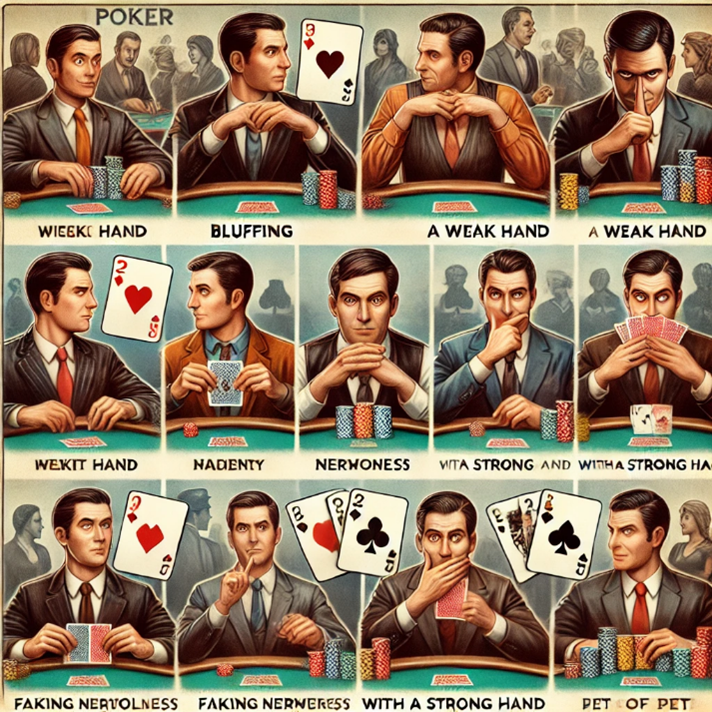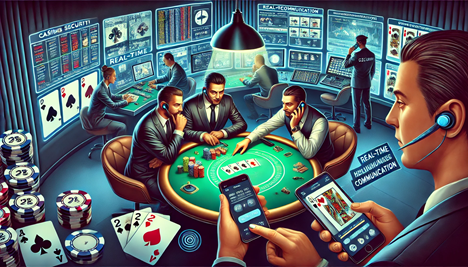How to Improve Your Poker Face and Bluffing Skills

How to Improve Your Poker Face and Bluffing Skills
by Nathaniel 03:30pm Jan 10, 2025

How to Improve Your Poker Face and Bluffing Skills
Improving your poker face and bluffing skills is key to becoming a more successful player, as these skills help you conceal your hand and manipulate opponents’ perceptions. Here’s a breakdown of how to improve these aspects of your poker game:
1. Mastering Your Poker Face
Your "poker face" refers to maintaining an expression that doesn't give away any information about the strength of your hand. Here’s how to enhance your ability to maintain a neutral face:
Control Your Emotions:
Stay Calm:If you're excited, nervous, or frustrated, it’s easy for opponents to read your feelings. Practice staying calm, especially in high-stakes situations.
Breathing Exercises:Slow, deep breathing can help you stay relaxed and maintain composure.
Practice Neutral Expressions:
Neutral Tone of Voice:Keep your voice steady, and avoid raising your pitch or lowering it when you have a strong or weak hand.
Eye Contact:Avoid excessive eye contact or constantly shifting your gaze, which can reveal discomfort or nervousness. Practice holding steady, neutral eye contact with players.
Practice with Friends:
Have a friend or poker buddy give you feedback while you practice. You can also record yourself playing to see if your face shows any inadvertent signs of strength or weakness.
2. Bluffing Techniques
Bluffing effectively requires a balance of confidence, timing, and psychology. Here are strategies to improve your bluffing:
Know When to Bluff:
The Right Timing:Bluffing is most effective when the board (community cards) suggests that you could have a strong hand. For instance, if there’s a potential straight or flush on the board, you could represent that hand even if you don't have it.
Table Dynamics:Bluffing works better against tight players who fold easily and less effectively against loose players who call with a wider range of hands.
Don’t Bluff Too Often:If you bluff too frequently, you’ll develop a reputation and opponents will call your bluffs more often. Use bluffing sparingly to keep opponents guessing.
Tell a Consistent Story:
Use Your Betting Pattern: Ensure your bet sizes make sense with the hand you’re trying to represent. For example, a large bet on the river might indicate you have a strong hand, while a small bet can sometimes suggest a draw.
Position Matters:Bluff more frequently when you’re in a later position, as you have more information on your opponents’ actions.
Physical Tells and Control:
Keep Your Movements Controlled: Sudden or exaggerated gestures can give away nervousness or excitement. Practice controlled movements, especially when you’re bluffing.
Don’t Overdo It:If you're bluffing, try to avoid being overly stiff or overly confident. A natural, smooth style works best.
Body Language:
Inconsistent Behavior:If you're bluffing, try to mimic the behavior of when you're holding a strong hand. For example, if you tend to look relaxed when you have a good hand, avoid stiffening up when you're bluffing.
3. Psychological Manipulation
Poker is as much about reading opponents as it is about hiding your own emotions. Here's how you can get into your opponents' heads:
Watch for Opponent Tells:
Notice their Behavior:See how opponents act when they have a good hand versus a bad hand. Look for signs of stress, changes in breathing, body shifts, or patterns in their betting.
Change Your Playing Style:
Vary your betting patterns, and mix up your game. If you always bet big when you have a strong hand, opponents will catch on. Keep them guessing with occasional bluffs mixed in with solid hands.
Confidence is Key:
Whether you’re bluffing or not, showing confidence at the table can lead opponents to second-guess their decisions. Avoid showing hesitation or doubt.
4. Observation and Adaptation
Adapt to the Table:Every poker table has its own dynamic, so adapt your bluffing and poker face based on the players. Some may call frequently, while others will fold with little pressure.
Study Other Players: Watch how experienced players manage their poker face and bluffing techniques. Pay attention to how they maintain their composure and manipulate the table.






